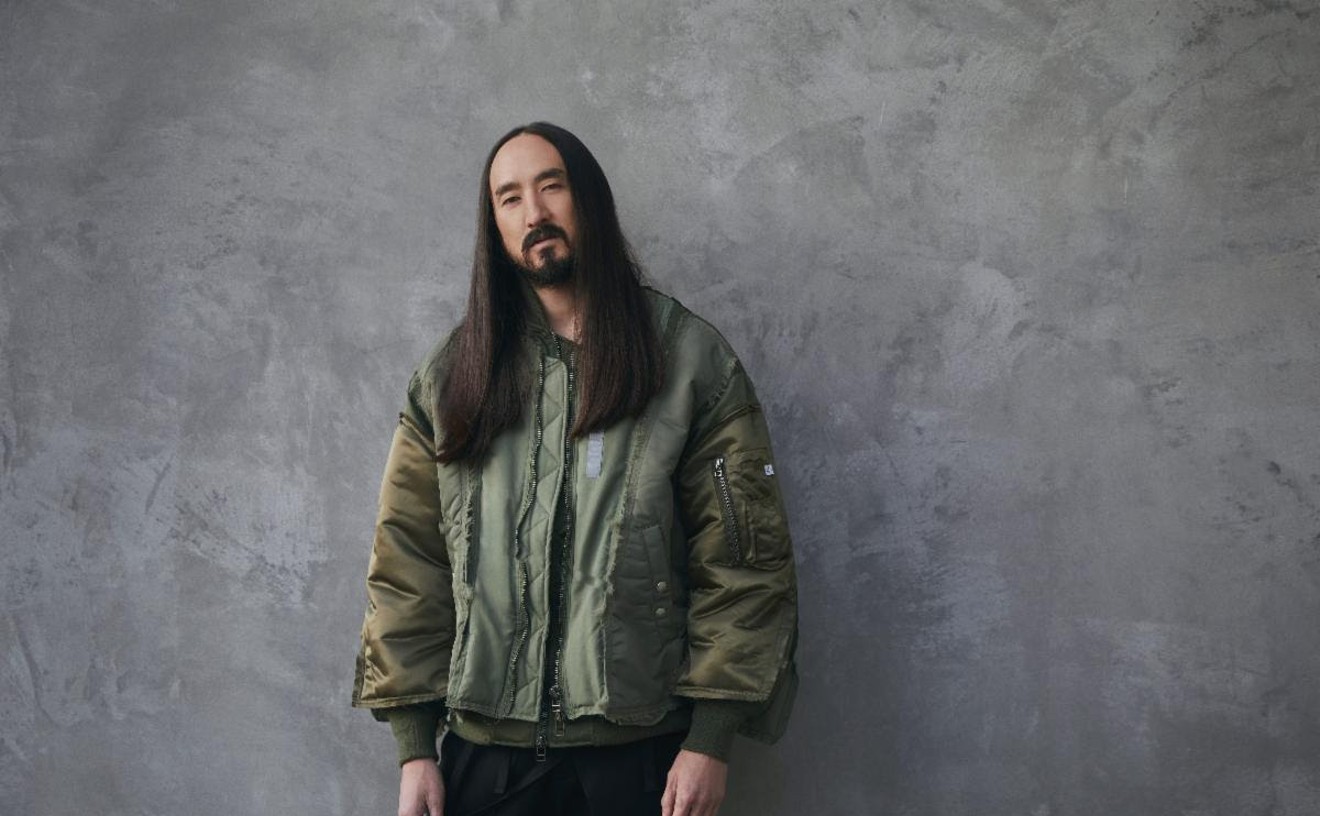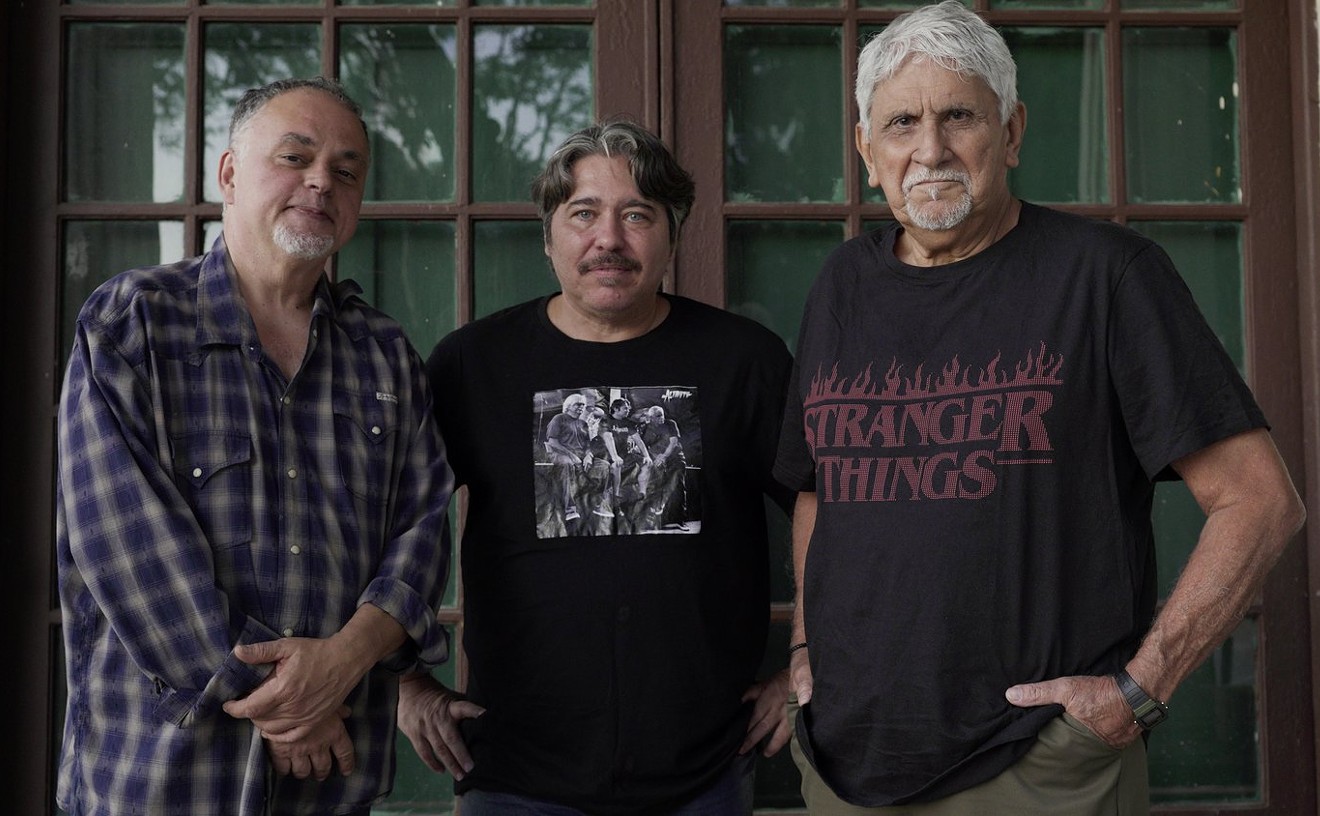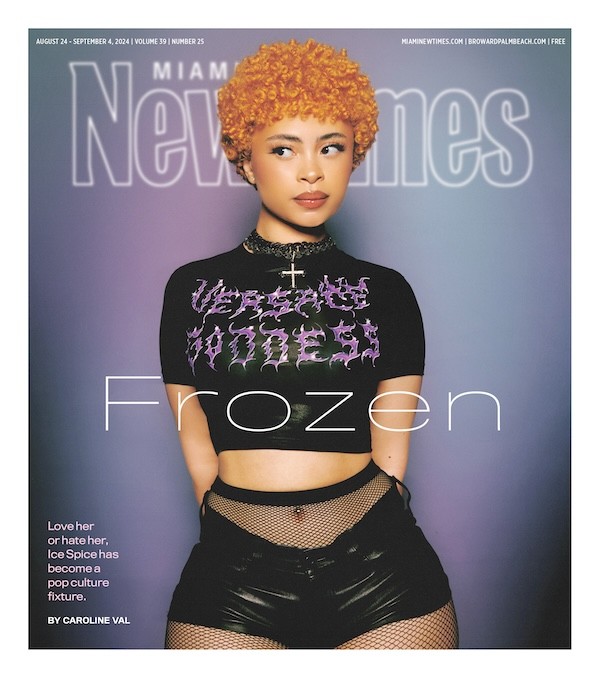There may be no greater gulf between an artist's onstage persona and their music than that of William Basinski. At least that was my impression when I caught a set by the composer in Amsterdam earlier this year. The 65-year-old with flowing gray hair strode onstage in a shoulder-padded jacket, skinny-fit pants, and stiletto-heel boots, and addressed the crowd in an exaggerated Southern drawl.
Someone unfamiliar with the artist might have expected some honky-tonk glam rock extravaganza to follow, but what came instead was some of the most hauntingly beautiful sounds I've heard. Basinski's distinctive tape loops echoed across the hall of Amsterdam's Muziekgebouw — ghostly orchestral strings, ethereal choral vocals, and tones with no particular etymology, all repeating again and again. The crowd staggered and swayed along, some hugging, some sitting on the floor and letting the waves of sound wash over them.
Months later, I'm speaking with Basinski over Zoom. He's at home in Los Angeles. The drawl is curiously absent for most of our talk, but he is undeniably a child of the South. Though he mostly grew up in Texas, he shares some genuinely idyllic boyhood memories of Florida, watching rockets launch from the beach on Cape Canaveral and sailing on the Indian River.
"My dad was an engineer working for NASA, helping with the Mercury and Apollo programs, and he worked for a contractor in Melbourne Beach," he remembers. "[My house] was two blocks to the Indian River and two blocks to the beach, and I had a little sailboat that I got for my birthday one year, and Mr. Wilson across the street made a trailer for me that I could put it on for my bicycle. I would go down to the river by myself after I passed the sailing class and sail my boat. It was so nice. I was a real melancholy mess back then, and I could just be in the water sailing along. Watermusic reminds me of the peace and tranquility of that time when I was about 12 or 13."
Basinski came to music in middle school, where he played clarinet, eventually studying saxophone and composition at the University of North Texas in Denton. After migrating toward the college town's art and music scene, which still produces plenty of weirdo musicians, he dropped out and traveled to bigger, queerer destinations. That's where he developed his unique compositional approach: using the tape recorder as an instrument.
"I spent a lot of time in obscurity," he says, "starting in the late '70s in San Francisco, and then the '80s in New York, creating my own synthesizer sounds — patches, if you will — with tape loops, grabbing bits and pieces out of the airwaves. The most powerful radio station in New York then was at the top of the Empire State Building. It was the American popular standard muzak station, and I wanted string sounds. I couldn't afford a Mellotron, of course, and I knew it was made with loops. And so I just started trying to create something from nothing, getting this out of the airwaves and slowing them down. And from this anesthesia music, you grabbed a piece, flipped it, slowed it down, and all of a sudden, there's this big well of melancholy, which I like."
Basinski developed a massive archive of sounds and tape loops, which he sat on for years. "Sometimes I would make a loop, and it came out so perfect, I knew that it didn't need anything else. But at that time, I wasn't sure if I could call that my work. So it got set aside." Ironically, an effort to digitize and organize these archival tapes, many of which were already poor quality when he originally acquired them, is what catapulted him out of obscurity.
"I got a CD burner, and I started pulling out all these things out of storage and archiving them, digitizing them," he recalls. "When I started doing this, I used these old tape decks and tape from junk stores. So the tape was old in the late '70s When I started working with it, and I knew from recording engineer friends about tape dropouts and what happens to old analog tape."
What happened next has made its way into music legend. As Basinski played each tape, the magnetic strip that contained the recordings started to fall off the plastic backing. The sound, too, appeared to be disintegrating along with its physical container, creating an eerie effect the composer knew was special all on its own.
"I realized this is about just making sure you document this one-time thing. So stay out of the way, make sure your levels are good. And so that's what I did with the six loops. And that became The Disintegration Loops. So I had to wait for my work to die to launch my career," he adds.
Basinski isn't solely an ambient composer. He also plays in the band Sparkle Division with musicians Preston Wendel and Gary Thomas Wright. He conceived the wild concept for the band's album Foxy, a groovy confabulation of '60s pop, jungle, and exotica with a story about a Hollywood party with an LSD-spiked punch bowl.
Still, he has gone back to his archive of tape loops many times. The show he'll be presenting in Miami, "The Last Symphony," is primarily derived from a piece of the same name he made in 1984, presented within a contemporary context against a backdrop of truly dispiriting current events. "I chose three or four of my favorite drone pieces from [the 2020 album] Lamentations, and three beautiful female vocal pieces, and then cut it all together, layered with some of this Last Symphony piece," he says. "And you know, here we are again, World War III. So this is like my war show."
War happens to be integral to another part of the Disintegration Loops story that's leaned an even more mythic bent to the project: Basinski finished recording on the morning of September 11, 2001. The Twin Towers, too, were collapsing. Witnessing the smoke furling from Ground Zero from his Brooklyn apartment, he set up a camera and recorded the scene while listening to the loops with neighbors and friends. The piece is now in the permanent collection of the National September 11 Memorial and Museum.
I hadn't planned on bringing up The Disintegration Loops. It would have been like asking Beethoven about "Ode to Joy" — too obvious. But Basinski clearly considers it something extraordinary, even after all this time. "It was a remarkable event that I managed to record, and, you know, they're beautiful pieces. I don't listen to it all the time, but I can. I enjoy it, you know?"
He jokes, "How do you top that? Well, you don't!"
William Basinski. With Pablo Arrangoiz. 7 p.m. Friday, December 15, at the Ground, 34 NE 11th St., Miami; thegroundmiami.com. Tickets cost $27 via dice.fm.

Audio By Carbonatix
[
{
"name": "Air - MediumRectangle - Inline Content - Mobile Display Size",
"component": "19274298",
"insertPoint": "2",
"requiredCountToDisplay": "2",
"watchElement": ".fdn-content-body",
"astAdList": [
{
"adType": "rectangle",
"displayTargets": "mobile"
}
]
},{
"name": "Editor Picks",
"component": "17482312",
"insertPoint": "4",
"requiredCountToDisplay": "1",
"watchElement": ".fdn-content-body",
"astAdList": [
{
"adType": "rectangle",
"displayTargets": "desktop|tablet"
},{
"adType": "rectangle",
"displayTargets": "desktop|tablet|mobile"
}
]
},{
"name": "Inline Links",
"component": "18711090",
"insertPoint": "8th",
"startingPoint": 8,
"requiredCountToDisplay": "7",
"maxInsertions": 25
},{
"name": "Air - MediumRectangle - Combo - Inline Content",
"component": "17482310",
"insertPoint": "8th",
"startingPoint": 8,
"requiredCountToDisplay": "7",
"maxInsertions": 25,
"watchElement": ".fdn-content-body",
"astAdList": [
{
"adType": "rectangle",
"displayTargets": "desktop|tablet"
},{
"adType": "rectangle",
"displayTargets": "desktop|tablet|mobile"
}
]
},{
"name": "Inline Links",
"component": "18711090",
"insertPoint": "8th",
"startingPoint": 12,
"requiredCountToDisplay": "11",
"maxInsertions": 25
},{
"name": "Air - Leaderboard Tower - Combo - Inline Content",
"component": "17482313",
"insertPoint": "8th",
"startingPoint": 12,
"requiredCountToDisplay": "12",
"maxInsertions": 25,
"watchElement": ".fdn-content-body",
"astAdList": [
{
"adType": "leaderboardInlineContent",
"displayTargets": "desktop|tablet"
},{
"adType": "tower",
"displayTargets": "mobile"
}
]
}
]











